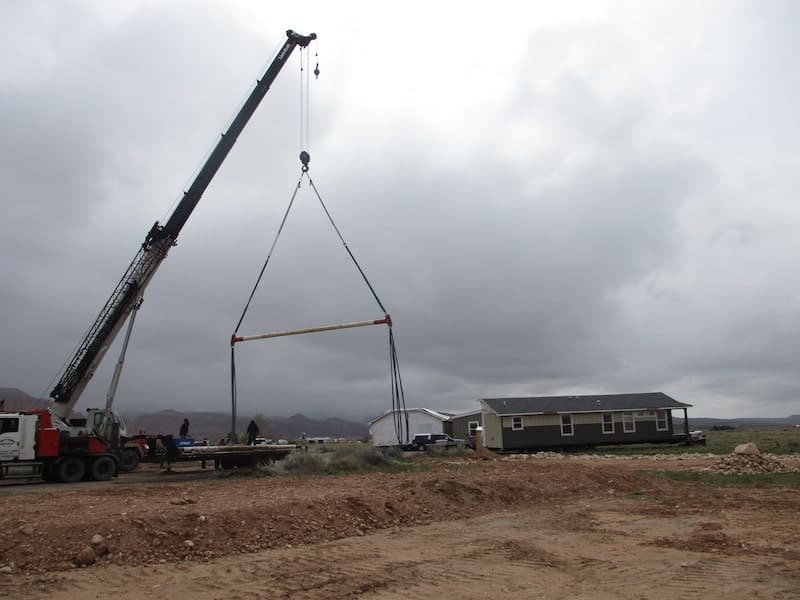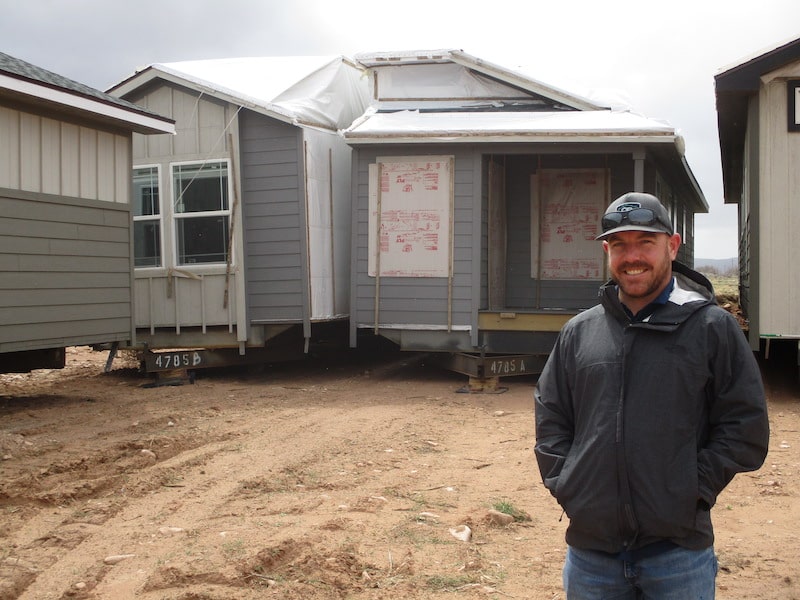Providing Attainable Housing In a Scarce Market
On a cold and windy spring morning just south of Moab, a construction crew is pouring and shaping concrete curbs and gutters around a looped drive that will soon give access to a new development called Lidia Subdivision. Brand new modular homes, delivered earlier by truck, are staged around the site, ready to be moved onto permanent foundations by crane. The homes will be owned by Moab businesses and leased to employees, offering a small step toward meeting the urgent housing demand in the Moab area.
“It’s just a drop in the bucket,” acknowledged Zach Bynum, who is overseeing the development. But, he added, “every bedroom helps.”
Bynum is a familiar name in the Moab area. Zach Bynum’s parents grew up in Moab, and after some time away, they returned and got into the hospitality business. Now, members of the Bynum family own or are involved with several hotels and restaurants around town. Five of those businesses will own homes in the Lidia Subdivision — the Hyatt Place, the Archway Inn, Zax Restaurant, The Spoke, and Best Western Canyonlands. They’ll be able to offer those homes for rent to their employees.
“We have a list of employees who are interested,” Bynum said. “We shouldn’t have a problem filling them.”
Moab and Grand County, like many other places across the country, have struggled with housing scarcity for years. The issue is exacerbated in Moab and other resort towns, where tourism drives up property values, and many jobs essential to the local economy are relatively low-paying service industry positions.
Attainable housing is hard to find for low-income earners, and also for middle-income earners like teachers and police officers. The Grand County School District, Moab City Police Department, and other local government departments have found it difficult to recruit and retain staff because of the lack of available housing.
Local elected officials have used various strategies to address the problem. A “High Density Housing Overlay” allows developers in specified areas to build at a higher density than the zoning would allow, provided the developer deed-restricts 80% of the units to Grand County workers. New overnight accommodation developments in Moab must make contributions toward workforce housing. Moab City bought an aging mobile home park with the intention of developing high-quality affordable housing. The county created a new ordinance sanctioning RVs and other alternative living arrangements for use as long term residences as long as they meet certain standards.

Alongside government officials, housing activists and nonprofits have also been tackling the housing shortage: the Moab Area Community Land Trust secured a property of more than 40 acres and designed a 300-unit development; many homes have already been built, some homeowners have moved in, and construction is ongoing. Local nonprofits, Community Rebuilds and the Housing Authority of Southeastern Utah, are contracted to build many of the homes for the Land Trust, and have been developing other housing in the Moab area for years.
Each of these approaches has had some complications, but many of them are starting to produce results. Business owners like Bynum are also pitching in.
The Lidia Subdivision isn’t attached to any of the housing programs or requirements designed by Moab City or Grand County. In fact, it’s located in San Juan County, though it’s still within development contiguous to Moab (it’s about a 15-minute drive from downtown). Bynum said the project did get some grant money through Grand County — around $30,000 — but it’s mostly conventionally funded.
The development will eventually have 58 lots; the first phase includes 15 units which will be dedicated workforce housing, while later phases will have lots or finished homes for sale to the general public. There will be a mix of single-family homes and condominium-style duplexes and triplexes.
Bynum said his businesses have had their share of difficulty in maintaining full staffing in recent years. 2021, the year following the pandemic shutdowns, brought the most pressure, he remembered. Visitors returned to Moab in a record-breaking surge, and staffing needs correspondingly spiked. The following years have been less hectic, Bynum said. He attributes that largely to visitation numbers ebbing to recognizable levels, but said it could also be that there are more housing options in Moab now than there were a few years ago. Wages, too, have increased in Moab in recent years, potentially opening more housing options for area workers.
A recent “regional housing outlook” from Grand County projects close to 5,000 possible new housing units on the horizon, including over 3,000 envisioned in a whole new community planned south of Moab in San Juan County. Depending on growth in population and housing needs, those units could go a long way towards closing the gap between housing supply and demand.
At Lidia Subdivision, flecks of snow blow across the gray sky as workers prepare to attach a home to the crane. Clouds hang low over red cliffs in the background, a glimpse of the scenery and outdoor access that make Moab such a popular destination and have fueled the tourism and growth the town has seen in recent decades.
“Moab being such a pretty place, lots of people want to be here,” Bynum said.
The community is striving to maintain a balance between the tourism economy and the quality of life for residents. Closing the housing gap is part of that balance — and every bedroom helps.





